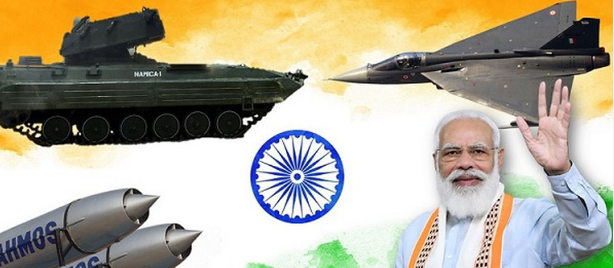Context:
India has registered a record of over Rs 21,000 crore of defence exports in the Financial year (FY) 2023-24.
More on the news
- Defence exports have touched a growth of 32.5% over the last fiscal year (2022-23) when the figure was Rs 15,920 crore.
- The recent figures indicate that the defence exports have grown by 31 times in the last 10 years as compared to Financial Year FY 2013-14.
- The private sector and the Defence Public Sector Undertakings (DPSUs) have contributed about 60% and 40% respectively.
- There has been a rise in the number of export authorisations issued to the defence exporters during FY 2023-24. From 1,414 export authorisations in FY 2022-23, the number jumped to 1,507 in FY 2023-24.
- A comparative data of two decades from 2004-05 to 2013-14 and 2014-15 to 2023-24 reveals that there has been a growth of 21 times in the defence exports.
Government Initiative to promote Defence Export
- The remarkable growth has been achieved due to the policy reforms and ‘Ease of Doing Business’ initiatives brought in by the Government.
- Defence Acquisition Procedure (DAP), 2020: It promotes domestic design and production of defence products and considers the fundamental principles of the Aatmanirbhar Bharat Abhiyan.
- Defence Procurement Procedure (DPP): A criterion for Indigenous Content (IC) has been established to help Indian component, subsystem, and equipment manufacturers establish themselves in the international defence supply chain.
- FDI Policy: Increasing the FDI limit from 49% to 74% under the automatic route in the defence sector.
- Offset Policy: It aims to encourage investments in the Transfer of Technology (ToT)/Critical Technologies to the Indian industry in the Defence sector.
- Indigenisation list: It is aimed at helping start-ups, MSMEs, and individual innovators create prototypes and solutions for the problem statements compiled by relevant defence stakeholders.
- Online portal: A new online portal (defence exim) to disseminate export leads from various sources to registered Indian defence exporters.
- Line of Credit: Line of Credit offered to Friendly foreign countries to purchase Defence equipment.
Arms Imports Position of India
- India remains the world’s top arms importer, accounting for 9.8% of the global arms sales, states the latest report 2024 from the Stockholm International Peace Research Institute (SIPRI).
- India is the largest arms customer of France, Russia and Israel.

Challenges to India’s Defence Exports
- Distorted defence market: Due to distorted market conditions, both DPSUs and private players do not always have inventory for export, nor do they consistently have capital to invest in R&D that can provide a diversified product mix to enhance defence exports.
- Lack of cohesion: There is a lack of cohesion between the Indian Armed Forces, the DPSUs, private manufacturers, and the Ministry of Defence regarding the export of indigenous defence products
- Ad-hoc institutional and policy focus: multiple committees have been formed and reports published by the government addressing the need to build a robust defence export ecosystem, this has rarely translated into action and usually results in ad-hoc measures.
It would be fair to say that India has made incremental gains in its defence exports trajectory and formulated an enabling ideational and institutional framework to push this agenda. However, it must continue ideating and implementing reforms to achieve its target of US$5 billion in exports and move into the top 20 defence exporters globally.

